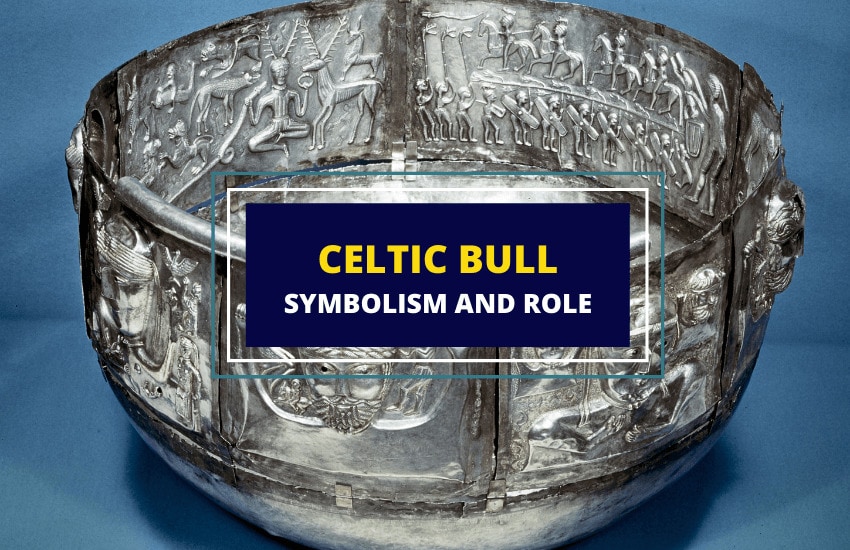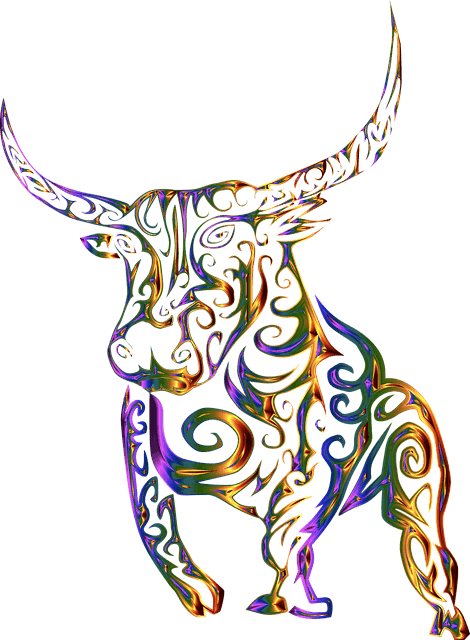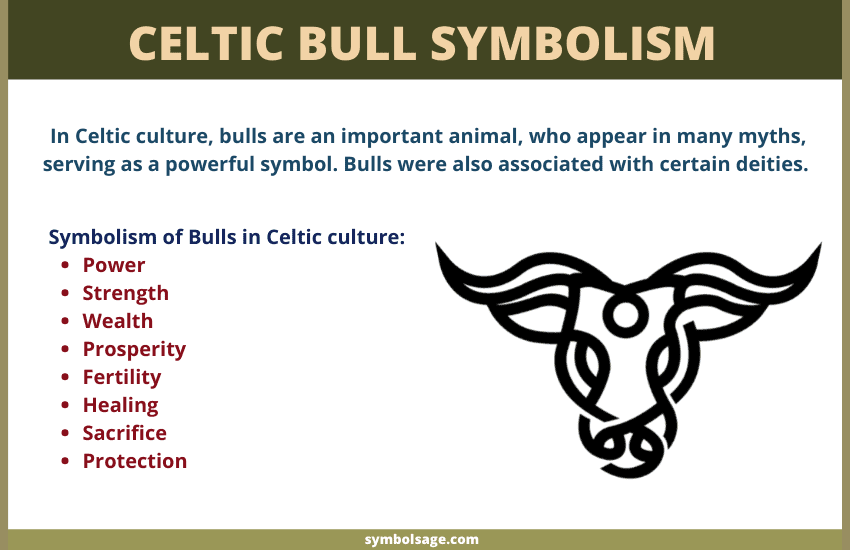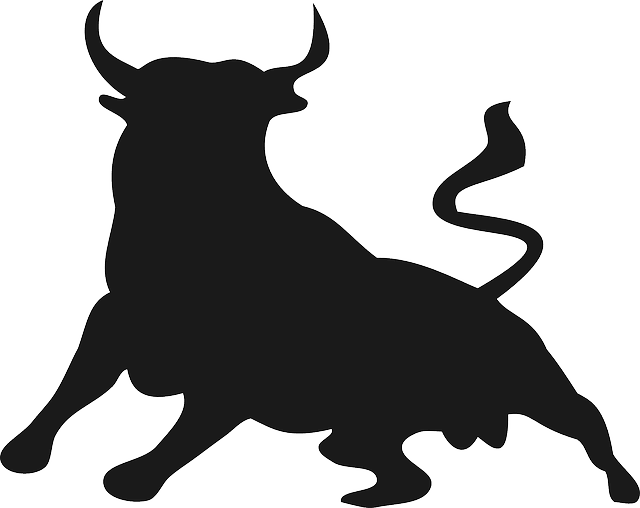
Table of Contents
In Celtic culture, bulls are an important animal, who appear in many tales, serving as a powerful symbol. The bull was sometimes sacrificed to appease the gods, and in Ireland and Scotland, bulls were used in ceremonies to predict the future and to even choose a new king. Here’s what to know about the significance and symbolic meanings of the Celtic bull.
The Celtic Bull in Mythology

Bulls have featured in various Celtic myths, as well as in art, figurines, and sculptures. Viewed as a powerful, strong animal with the ability to enhance human divination skills, bulls are also associated with certain Celtic deities.
Tarvos Trigaranus
The Latin name for a presumably Celtic deity, Tarvos Trigaranus is a bull god, whose name literally means bull with three cranes. Originally, the Latin phrase was a title inscribed on 1st century stone sculpture, but scholars speculate that it was also the name of a bull god. As the name implies, he’s depicted in the form of a bull, accompanied by cranes, or other three long-legged marsh birds.
Tarvos Trigaranus is represented in two stone sculptures in Paris and Trier, Germany. In the Paris sculpture, discovered in 1711 under the Notre Dame Cathedral, he is depicted with the Celtic gods Esus, Cernunnos and Smertrius.
It’s believed that a group of boatmen who sailed the Seine River dedicated the monument to Jupiter in Paris, around 26 CE. Unfortunately, the story behind the sculpture has been lost over time, but scholars associate it with a Celtic myth.
Historically, the bull was connected with the Celtic god Esus, who is portrayed in another scene of the same sculpture as a woodman chopping down a tree, sheltering a bull and three birds. Scholars don’t know what the scene refers to, but they associate it with a mythology about regeneration. In the myth, a bull was killed by a hunter, but brought back to life by the cranes.
The Cattle Raid of Cooley
In the Ulster cycle of Irish mythology, two great bulls, Donn Cúailnge, the brown bull of Cooley, and Finnbhennach, the white bull of Connacht, were once herdsmen named Friuch and Rucht respectively.
Also known as Táin bó Cuailnge, the story narrates the rivalry between the two men, Friuch and Rucht, where they continued to fight even after they were transformed into animals who retained their capacity for human reasoning and language. Their fight lasted for several lifetimes, as they underwent a series of transformations, including ravens, stags, water beasts, and even guardians of the herd.
Finally, Friuch turned into the brown bull named Donn Cúailnge, and Rucht transformed into the white bull called Finnbennach. The two bulls were separated for a while, the brown bull in Ulster and the white bull in Connacht.
One day, their paths crossed again, so they fought over days and nights. At the end, Donn Cúailnge killed Finnbennach, but the brown bull was also severely wounded. Eventually, he also died.
The plot also includes other characters who were responsible for the meeting of the two bulls. It’s rooted with the longstanding hatred between Queen Medb of Connacht and King Conchobar of Ulster. However, the story begins with a domestic jealousy, when Queen Medb and her consort Ailill quarreled over who owned the most valuable possessions.
Ailill owns a splendid white bull, so Medb yearned to attain the equally magnificent brown bull of Cooley. Some sources say that the queen declared war on Ulster to acquire the brown bull by force. When the queen won the war, she took the brown bull as her prize. She brought it home to Connacht and the two bulls met again.
These tales demonstrate that the bull was an important aspect of Celtic mythology and played a role in the myths.
Meaning and Symbolism of the Celtic Bull

Celtic mythology involves animals that have magical powers of their own. The bulls were embraced by the Celts and appear in many tales. Here are some of the animal’s symbolism:
- Strength and Power
Bulls were revered and admired for their strength, dominance, and ferocity. They were the most commonly represented animals in figurines and statuettes, especially during the early Iron Age. Their horns speak to their power and aggression.
- Wealth and Prosperity
In medieval Irish culture, bulls were a symbol of wealth, as a ruler’s status was measured by the number of his herds. Stealing cattle from neighboring kingdoms was a dangerous sport for young men, who gained power through their skill in cattle raids. The tale of Táin bó Cuailnge shows the importance of these creatures in Irish society, as it features two special bulls coveted by two rulers.
Since the Celts were predominantly a herding people, cattle, especially bulls, were also associated with agricultural abundance. The bull was also linked with the Celtic god Cernunnos, the god of nature and abundance. As a bringer of abundance, bulls were featured on bowls, buckets, cauldrons, and firedogs, as well as on Gaulish coins.
- Fertility and Healing
The bull seems to have fulfilled a sacred role in several cults and is associated with fertility and regeneration. In fact, bulls were offered in the fulfillment of vows, especially at the curative shrines Fontes Sequanae (known as the Springs of Sequana), Tremblois, and Forêt d’Halatte.
- Symbol of Sacrifice
Celtic sanctuaries and graves show an evidence of bull sacrifice. They were used as both uneaten offerings to the gods and part of the ritual feast. Certain divination rituals even required the sacrifice of a white bull.
It’s said that Continental Celtic god Esus was associated with the bull. Some believe that he appeared as a woodsman cutting down trees in the presence of bulls. Some scholars speculate that the tree and bull are parallel images of sacrifice.
- Symbol of Protection
The bull is the protector of its herd, associating it with protection. It will even give warning by bellowing its rage and pawing the ground before attacking anything it considers a threat. In line with this, some entrances to shrines were sometimes guarded by bull skulls. A bronze sword-scabbard engraved with bulls dating to the 5th century BCE, suggests that the creature was used as a talisman for protection.
The Celtic Bull in History

Before the Celtic period in Britain, and as early as Neolithic and Bronze Ages, bulls were found in European iconography, suggesting that they were of great importance in prehistoric rituals.
In Literature
Most of what is known today as Irish Celtic mythology comes from three manuscripts: the Book of Leinster,the Yellow Book of Lecan,andthe Book of the Dun Cow. These three books feature slightly different versions of some of the same tales, especially the Táin bó Cuailnge or the Cattle Raid of Cooley, which is about the conflict of two enchanted bulls.
The Book of the Dun Cow is the oldest of three volumes of prose, compiled around 1000 CE. It’s said that the mythology it contains is much older and survived through generations of oral tradition. It’s even said that the book was made from the skin of a cow preserved for 500 years.
In Local Culture
The Celts viewed the bull as a symbolic emblem and even applied it to the name of towns, such as the town of Tarbes in southern Gaul, also called bull town. Bull symbolism also appears on coins and have been found on statuettes, especially in Gaul, Scotland, and England.
Some Celtic tribal names also had allusions to the animals, especially the Taurisci or the Bull People. It was a tradition for a clan to display the head, or pelt of their clan animal, as well as paint its symbol on their shields, and tattoo it on their bodies.
In Religion and Sacrificial Rites
According to historians, there’s evidence of bull sacrifice. Though these bulls were doubtless eaten, the difference between a feast and a sacrifice is sometimes difficult to distinguish.
According to classical writers, animals were also offered as sacrifice in some rituals. Pliny the Elder mentions the sacrifice of two white bulls during the occasion of mistletoe cutting. Julius Caesar claimed that the Celts of Gaul annually burned animals caged with human captives alive.
Sometimes, the bull is also associated with a deity, such as the Continental Celtic god Deiotaros, whose name means the divine bull or the bull god, suggesting that he may be like Tarvos Trigaranus of Gaul.
In Divination
The druids and bards performed divination rituals, in hopes of seeing the future. Most of these rituals involved animals who were thought to provide signs. In ancient Ireland, one form of divination that involved bulls was called the Tarbhfhess, also known as bull feast or bull-sleep.
During the ritual, a poet, who had been trained as a seer, would eat raw meat—some sources say that a bull was slaughtered and cooked, and the poet would eat both the flesh and broth. Then, he would lay down to sleep, wrapped in the skin of the newly slaughtered bull. The druids would chant over him until they received a vision that revealed the identity of the next rightful king.
The most elevated poet could also punish any king who proved unfit to rule. Sometimes, the poet’s vision was cryptic. Apart from dream states, some methods of divination also included chanting and trances.
In 1769, a literary tourist described a similar bull sacrifice practiced in the Trotternish district. The ritual was apparently long lasting and was described as “horrible solemnity.” The Scottish Highlanders bound up a man in bull hides and left him to dream of the future. The diviner was even placed under a high waterfall in hopes of gaining precognitive knowledge.
In Art and Iconography
Found in Denmark in 1891 CE, the famous gilded silver bowl known as Gundestrup Cauldron features the influence of Celtic mythology. It has been dated between the period of 3rd century to 1st century BCE, and its relief panels feature scenes of animals, sacrificial rituals, warriors, gods, and other motifs. According to some historians, it’s the Rosetta stone of Celtic mythology.
It’s believed that the bulls depicted on the cauldron were regarded as supernatural creatures, depicted much larger to their human killers. The depiction shows a dead bull, as well as a scene with three warriors who are about to slay three bulls, associating them with hunt or ritual sacrifice in Celtic culture.
Celtic Bull in Modern Times
Bull symbols are still used in religious iconography and cultural emblem in modern-day France, Ireland, Scotland, and Wales. The Cattle Raid of Cooley remains a popular legend in the region, as it has resonance for modern rural life. The creature’s symbolism remains powerful and is commonly featured in art, fashion, and on tattoo designs.
In Brief
Animal symbolism and its associations were important to the Celts, and perhaps none more so than the bull. The name tarvos, meaning bull, appears in the names of places and tribes, which shows the extent of bull worship. A symbol of strength, power, wealth, and protection, the bull is given magical properties in Celtic mythology.








